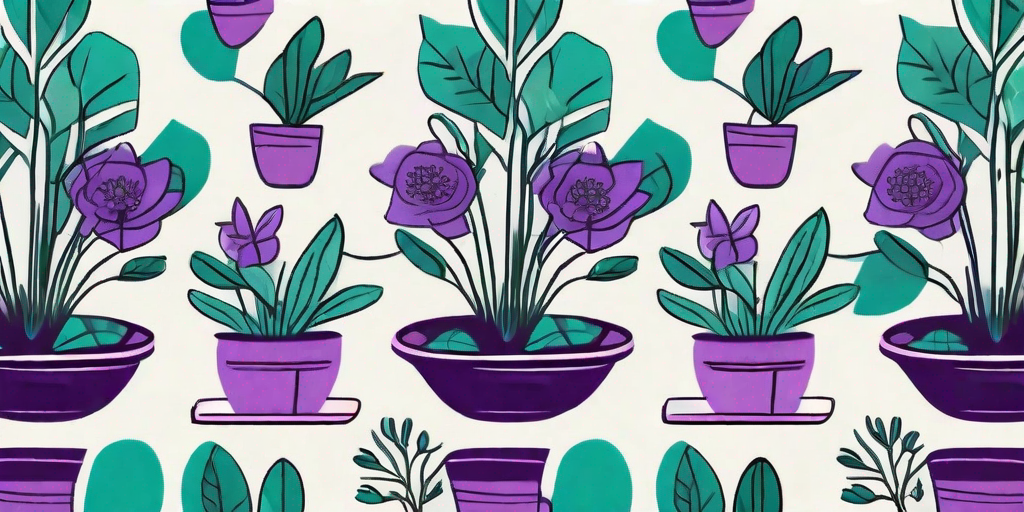
Ah, the Purple Passion Plant! A plant so lovely, it could make a cactus jealous. But how do you take care of this beauty? Fear not, green-thumbed reader, we've got all the dirt on how to keep your Purple Passion Plant thriving.
Understanding Your Purple Passion Plant
First things first, let's get to know your plant. The Purple Passion Plant, or Gynura aurantiaca if you want to get fancy, is a tropical perennial known for its velvety purple leaves. It's like the Prince of the plant world, but without the funky music.
Native to Southeast Asia, this plant loves warm, humid environments. But don't worry, it won't demand a trip to Bali every winter. With the right care, it can thrive in your living room just as well.
Characteristics of the Purple Passion Plant
The Purple Passion Plant is a real showstopper with its vibrant purple foliage. The leaves are covered in tiny hairs that give them a unique, velvety texture. It's like a plant and a pet all in one!
But wait, there's more! This plant also produces bright orange flowers. However, many plant owners choose to remove these flowers as they have a rather strong, and let's just say, not-so-pleasant scent. But hey, nobody's perfect, right?
Caring for Your Purple Passion Plant
Now that we've got the introductions out of the way, let's get down to business. How do you care for this purple wonder? Well, it's not as hard as you might think.
Despite its exotic origins, the Purple Passion Plant is relatively easy to care for. It's not too picky about light, water, or temperature. But like any plant, it does have its preferences.
Light Requirements
Your Purple Passion Plant loves bright, indirect light. Too much direct sunlight can cause the leaves to fade, and nobody wants a washed-out plant. So, keep it near a window, but out of the harsh midday sun.
On the other hand, too little light can cause the plant to become leggy as it stretches towards the light. If you notice this happening, it might be time to give your plant a little more sunshine.
Watering and Feeding
When it comes to watering, your Purple Passion Plant likes to play hard to get. It prefers the soil to dry out a bit between waterings. So, resist the urge to water it every day. Trust us, it's for the best.
As for feeding, a regular houseplant fertilizer will do the trick. Just remember, less is more. Over-fertilizing can lead to salt build-up in the soil, which can harm your plant.
Propagating Your Purple Passion Plant
So, you've fallen in love with your Purple Passion Plant and want more of them around? We don't blame you. Luckily, propagating this plant is a breeze.
Simply take a cutting, let it dry for a day or two, and then plant it in moist soil. With a little patience, you'll have a new plant in no time.
Common Problems and Solutions
Like any plant, the Purple Passion Plant can have its issues. But don't worry, we've got the solutions.
If your plant's leaves are losing their vibrant color, it might not be getting enough light. Try moving it to a brighter spot.
Yellow leaves can be a sign of overwatering. Remember, this plant likes to dry out between waterings.
FAQs
Why are the leaves on my Purple Passion Plant turning brown?
Brown leaves can be a sign of underwatering or low humidity. Try watering your plant more frequently and misting the leaves to increase humidity.
Can I grow a Purple Passion Plant outdoors?
Yes, but only if you live in a warm, humid climate. This plant does not tolerate cold well.
Is the Purple Passion Plant toxic to pets?
Yes, unfortunately, this plant can be toxic to cats and dogs if ingested. So, keep it out of reach of your furry friends.
Conclusion
There you have it, a comprehensive guide to caring for your Purple Passion Plant. With a little love and care, this plant will reward you with its stunning purple foliage. So, go forth and unleash the beauty of your Purple Passion Plant!















